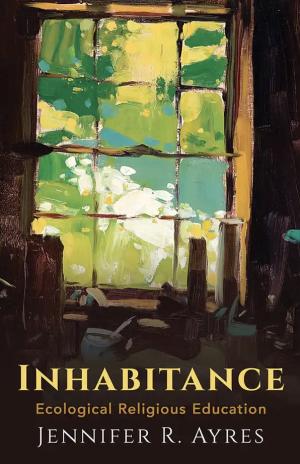Resources by Annie Lockhart-Gilroy

I have a confession to make. When everything moved online in the spring I detested everyone in every Zoom class and work meeting in which I participated. Okay, I didn’t quite detest my students and colleagues, but there was great resentment there. I hated working from home. Always have. My home is sacred space—a sanctuary from the difficulties of the world. A place to rest and play. But now all these people were invading my sacred space. I felt like I had turned my home into my classroom/office, and I wanted my home back. All the work-from-home experts talk about having designated areas and divisions. I tried to do that for myself and thought that students would do it for themselves as well. Then I had to design a week-long concentrated class that would meet synchronously on Zoom, and the idea that we would pretend that we were in a classroom separate from our home felt a bit silly for a class running from 8:30 a.m. to 5:00 p.m. every day for a week. And while there is something to having a designated work space, my home office is still in my home. So instead of ignoring the fact that we were all in class at home, I incorporated the home. I started by asking myself two questions: What does it mean to invite a class into your home? In what ways is holistic learning enhanced when each person is in their individual sacred space? I now approach all Zoom classes as an additional way to teach to the whole person and now incorporate the home throughout the course. I begin by asking about the space they have welcomed me into. Many people spend time on their Zoom space as they normally would on their home space when guests are coming over. At the beginning of the class, I ask them to introduce us to their space, whether it be a virtual background or the corner of their home they have prepared for us to see. Backgrounds can also be used as a visual representation of a concept. For my adolescent spirituality class, I encouraged students to use virtual backgrounds of a place that represents spiritual significance. Most students removed the virtual backgrounds after presenting them, but then spoke about their kitchen in the background, which led to a conversation about eating as a spiritual practice. When discussing the china cabinet behind one student and how the china was passed down from various family members, a conversation began about the spiritual practice of connecting with ancestors—a powerful spiritual practice for many cultures. In my Administrative Leadership class we each choose a background that makes us feel like a leader. If students choose to keep their cameras off, they can pick a picture for us to see instead. These exercises allow us to explore a concept through visual representation. This is often done in physical classes through pictures. Why not do this in Zoom classrooms with backgrounds and homes? An educator can also incorporate their students’ homes by asking class participants to find something in their home that represents a particular concept or theory being discussed in class. Certainly, not everybody has the same things accessible to them in their homes and the goal is not to show off what one has, but since any understood concept can be explained by just about any symbol, students can deepen their understanding by articulating a concept using a symbol and learn the complexities of a concept or theory by hearing their classmates do the same. I also design activities that can be done with other people in students’ homes. This is a little trickier because of the variety of living situations; I certainly do not want to pry. So, I acknowledge the diversity and simply note assignments which students can do with other people if they so choose. Once I embraced the process, the opportunities to incorporate the home seem endless. The fact is, we are not divided beings. I always work from home even if that means coming up with an idea in the shower or discussing over dinner that interesting thing a student said. I am not a divided person, and neither are my students. Teaching to the whole person means incorporating the space where the teaching occurs. Teaching and learning are sacred wherever they occur, and the learning space is so much richer, fuller, and wonderfully complex when it is the space that individuals have spent lots of time designing, cultivating, and nurturing. I am truly grateful for the invitation.

Being a professor during this pandemic has led me to several Wile E. Coyote moments. Looney Tunes character, Wile E. Coyote makes elaborate plans and employs complicated methods to achieve a singular goal—catching the Road Runner. One running gag involves the coyote falling from a high cliff; the coyote is so preoccupied catching the road runner that he runs off a cliff but doesn’t realize it for a moment. He then looks down, realizes that there is no ground beneath him, and falls. That moment that he looks down and sees that there is no ground under him is what I refer to as the Wile E. Coyote moment. He is so busy running and chasing that he does not realize that something fundamental has changed, and he can no longer run in the same way that he did before. Several times while teaching during this time of crisis, I felt like I was trying to run on air, mostly because, I too, was chasing a singular goal—normalcy. With so much turned upside down, it is understandable that we would all want some things to remain unchanged. I realized, though, that the classroom, and the teaching life in general, was not the place I would find normalcy. At first, I focused on changing my physical classroom course to a virtual classroom, but I did not stop to rethink my course that had been online all semester long –-even though those students were also experiencing a major context change. That’s when I realized that I was trying to run on air. When I think ahead to my weeklong concentrated course, still envisioning it as a completely in-person class, I am setting myself up to run on air. When, as collective faculty, we are leery of changes to policy for fear of loosening any standards and worry about precedent that will be set, we are trying to run on air. Wanting a sense of normalcy is very different from pretending that things are normal, or that we can continue to do things the way we have and our new normal will adjust around old rules. Teaching in times of crisis means realizing that in times of crisis, the rules are different. And in prolonged crises, the rules must be made up as we go along. Old ways of thinking no longer serve us—they will leave us running on air. There was one time when the Coyote caught the Road Runner. But as he was chasing, he did not realize that the Road Runner had gotten much larger. This was no longer the Road Runner that he knew. Nevertheless, he pulled up to the Road Runner with his knife and fork, realized that it was too large to eat, turned to the viewers, and angrily held up a sign to the audience: “Okay, wise guys,--you always wanted me to catch him–now what do I do?” In this time of pandemic, our classrooms, schedules, and overall reality have changed—for us and our students. Approaching this time as though it is normal may just be too big for us to devour right now. There will be a new normal when this crisis is over, but we do not know yet what it will look like, or when it will begin. So, maybe, we need to stop creating elaborate plans to catch the proverbial road runners professors pursue. We need to stop chasing the fear that our students’s education will be diminished if they don’t do all the things in the syllabus. Stop chasing our pre-pandemic publishing plan. Stop chasing all of New Year’s teaching and professional goals we set only four months ago. Some of us may continue to run, but now in a new direction as we learn our new contexts and work with students on how our learnings help us to respond. Some of us may jog as we relax expectations of our students and ourselves. Some of us may slow to a walk as we journey with students trying to make sense of it all. And sometimes we will need to sit and give ourselves permission to let many of our pre-pandemic plans just, “beep beep,” on by.

Like other creatures, human beings are inhabitants of their ecosystems. But are humans good inhabitants? According to Jennifer Ayres, the way of inhabitance is stubbornly elusive. The work of understanding, loving, and tending God’s world is constrained by patterns of alienation, exploitation, and systemic neglect and injustice. Faced daily by evidence of ecological death and decay, Ayres determines that this important work of inhabitance is constantly threatened by ecological despair. Ecological despair stems from alienation from the natural world, acute and generational grief resulting from loss of home places, and, for many, an overwhelming guilt at having been complicit in the planet’s suffering. In Inhabitance: Ecological Religious Education, Ayres proposes a solution to this increasing alienation: the way of inhabitance. Just as other animals live and thrive within their ecosystems, so do humans live in a habitat created, sustained, and loved by God. This God perpetually invites us to become better inhabitants. Many religious communities already cultivate inhabitance as a way of life, work that they consider to be central to their deepest theological commitments. Inhabitance examines a diverse array of such practices that foster more intentional engagement with the particular places in which people live. Ecological religious education, Ayres demonstrates, nurtures a disposition of loving commitment toward God’s creation. Inhabitance demands a willingness to love other beings and a willingness to courageously encounter the human and ecological suffering of the world and be fully present to that suffering. And even as humans live more lovingly, courageously, and attentively within their particular places, their lives are opened up to the deepest sources of human well-being—for when God’s world around us flourishes, so do we. (From the Publisher)